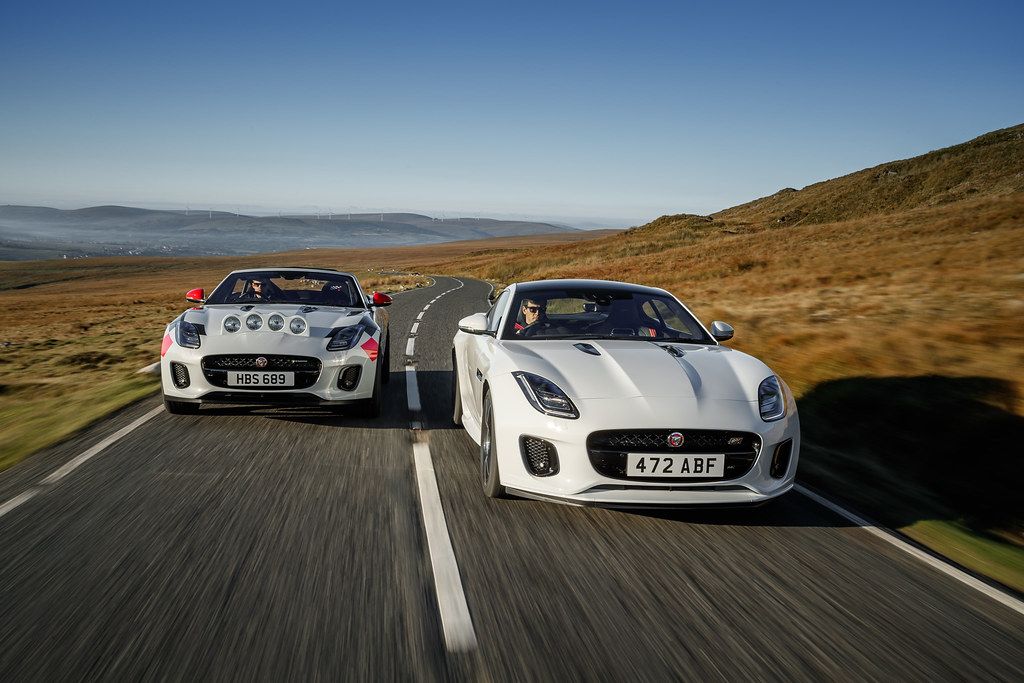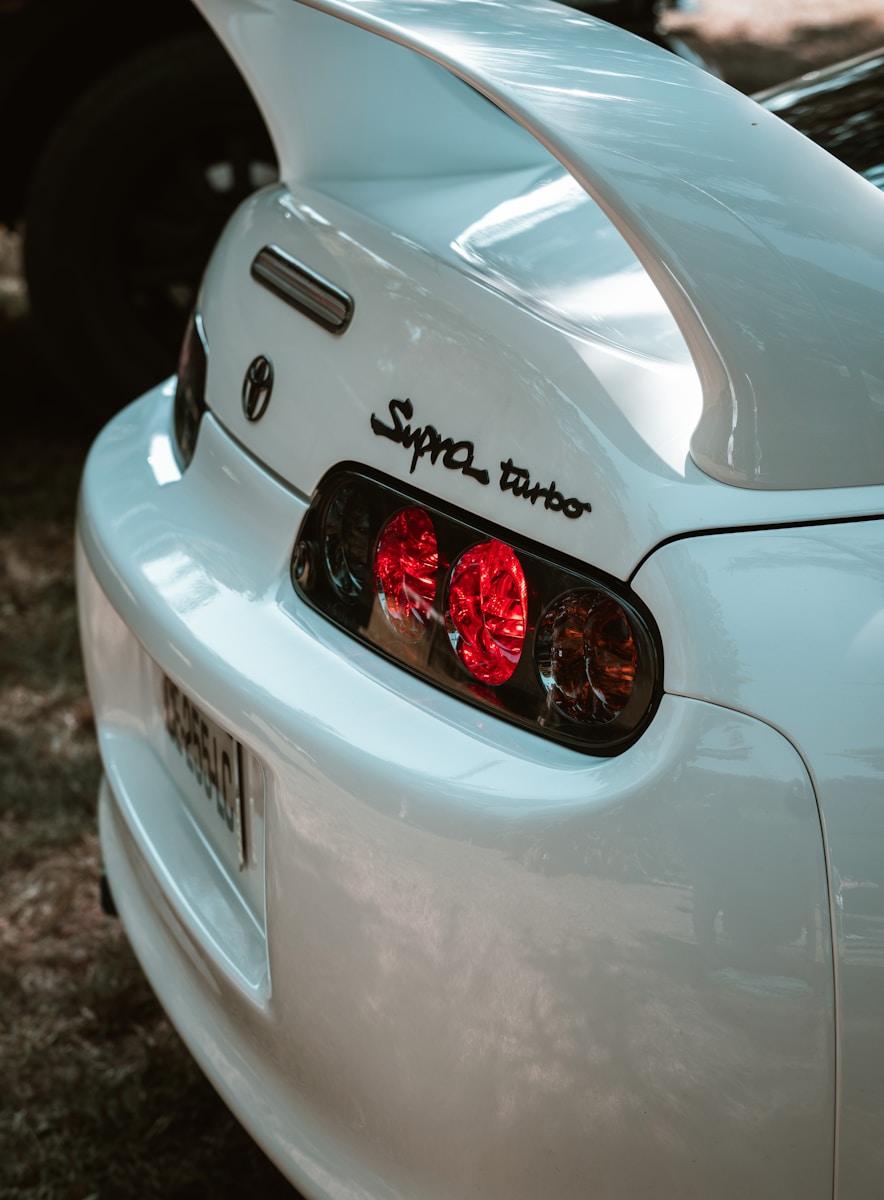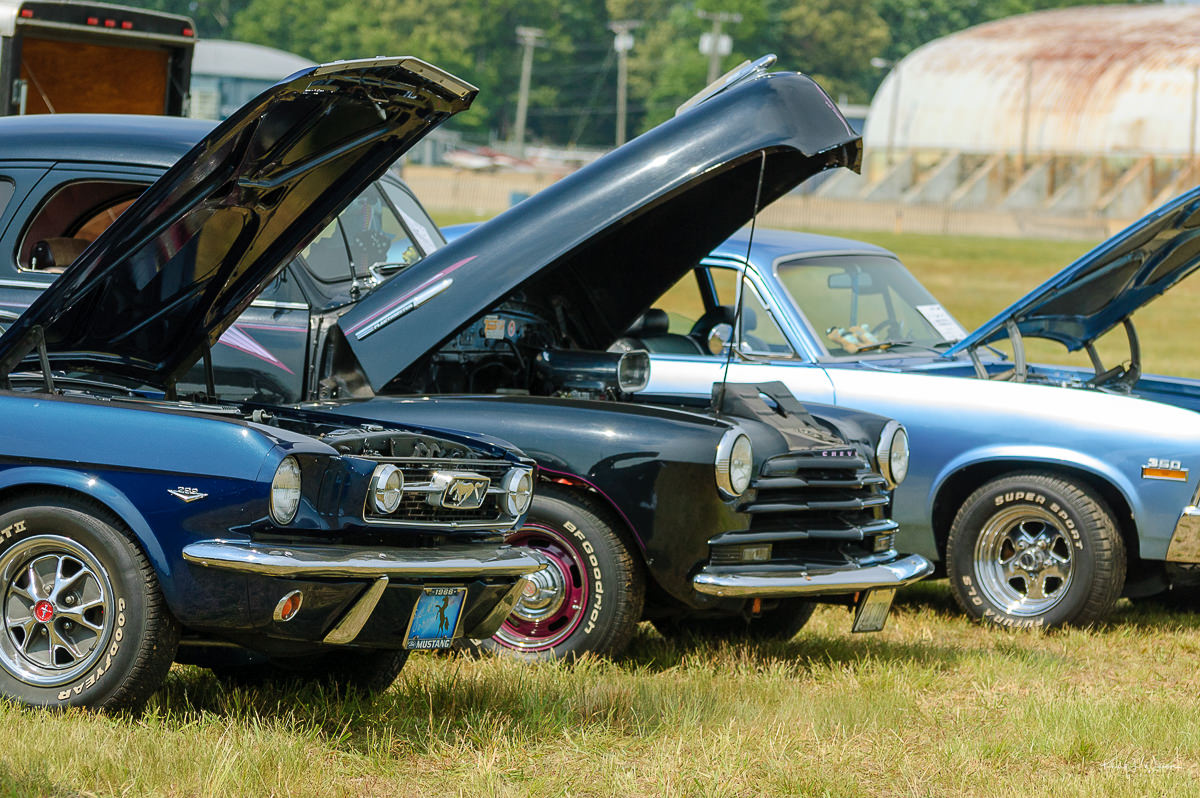
Ah, the roaring ’80s. If you were cruising around back then, you’ll remember how cars weren’t just four wheels and a seat—they were statements of style and innovation, personal expressions of a vibrant decade. These classics we’re about to revisit have matured like a fine wine, becoming prized collector’s items and a sweet reminder of our younger years when mullets were cool and cassette tapes ruled the airwaves.
For the longest time, American cars from the 1980s were the undisputed underdogs of the collector world. They were often dismissed as quirky, boxy, and, let’s be honest, sometimes a bit plasticky. They were the automotive equivalent of that embarrassing perm your mom had, or your dad’s questionable ’80s mustache — best left in old photo albums. Tucked away, maybe in an attic. But guess what? Just like acid-wash jeans and synth-pop, they’re back, baby, and people are paying serious attention!
From turbocharged sleepers that could embarrass Corvettes to digital-dash cruisers that felt like spaceships, these machines are not just climbing in value; they’re gaining serious street cred. Suddenly, that boxy sedan your uncle drove to work is now cool. Who knew? Whether you’re chasing those fuzzy childhood memories of crushing Hot Wheels or looking to invest in something more substantial than Dogecoin — something made of actual steel and nostalgia – these picks are the ones to watch. They’re loud, they’re proud, and they are unapologetically, gloriously ’80s, in the absolute best possible way. So dust off your Ray-Bans and crank up the Huey Lewis, because we’re going back in time (in a DeLorean, of course).
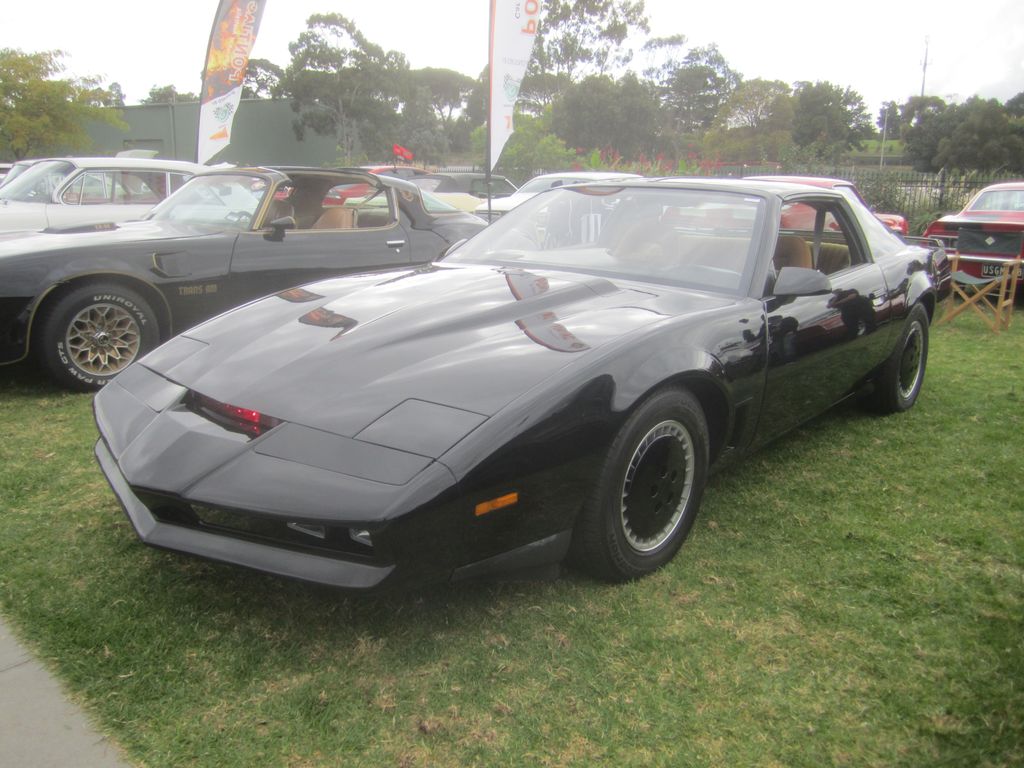
1. **1982 Pontiac Firebird Trans Am**The third-generation Pontiac Firebird Trans Am soared into pop culture alongside TV shows and ‘80s street racing dreams, making it an instant icon. With its sleek nose and signature hood decals, it was a head-turner at every stoplight, embodying the rebellious spirit of the era. This car wasn’t just transportation; it was a statement, a vehicle for youthful exuberance and cinematic escapades, etching itself into the collective memory of a generation.
Collectors now absolutely love these machines for a host of reasons that perfectly capture the ’80s zeitgeist. Their iconic pop-up headlights gave them a futuristic appeal, while the T-top roofs offered that quintessential open-air cruising experience, perfect for blasting hair-metal cassettes. Perhaps most importantly for enthusiasts, these cars came with easily modded V8 engines, making them a playground for tuners and street racers alike, eager to extract every last pony.
Even if you weren’t blasting hair-metal cassettes in one back then, picking up this classic now is a surefire way to relive the glory days. The ’82 Firebird Trans Am represents a tangible link to a time when automotive design was bold and unapologetic, and owning one today is about more than just a car – it’s about recapturing a piece of that unforgettable decade. It’s an investment in nostalgia, pure and simple.
Car Model Information: 2019 Honda Accord Sport 2.0T
Name: Pontiac Firebird
Caption: The second, third, and fourth generations of,the Pontiac Firebird Trans Am
Manufacturer: Pontiac (automobile)
Production: February 23, 1967 – August 30, 2002
ModelYears: 1967 – 2002
Class: Pony car,Muscle car
Platform: GM F platform
Related: Chevrolet Camaro
Layout: Front engine, rear-wheel-drive layout
Categories: 1970s cars, 1980s cars, 1990s cars, 2000s cars, All articles with dead external links
Summary: The Pontiac Firebird is an American automobile built and produced by Pontiac from the 1967 to 2002 model years. Designed as a pony car to compete with the Ford Mustang, it was introduced on February 23, 1967, five months after GM’s Chevrolet division’s platform-sharing Camaro. This also coincided with the release of the 1967 Mercury Cougar, Ford’s upscale, platform-sharing version of the Mustang.
The name “Firebird” was also previously used by GM for the General Motors Firebird series of concept cars in the 1950s.
Get more information about: Pontiac Firebird
Buying a high-performing used car >>>
Brand: Pontiac Model: Firebird Trans Am
Price: $22,566 Mileage: 52,019 mi.
Read more about: The End of an Era: Decoding Why U.S. Auto Giants Are Abandoning Sedans Entirely
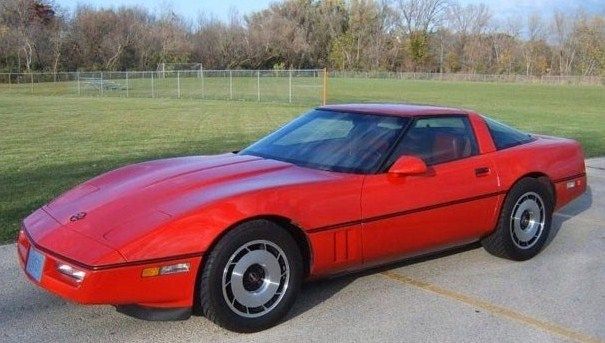
2. **1984 Chevrolet Corvette (C4)**When the fourth-generation Corvette, the C4, hit the streets in 1984, it screamed futuristic performance and completely reinvented America’s Sports Car. After the incredibly long run of the somewhat dated C3, Chevy came out swinging with a sleek, aerodynamic wedge-shaped body that looked like it had driven straight out of a sci-fi film. This wasn’t just a redesign; it was a total reinvention, dragging the Corvette into the modern era with audacious style.
Drivers relished the C4’s groundbreaking features, including its mesmerizing digital dash that felt straight out of a video game, its lightweight chassis, and an unmistakable wedge design that epitomized ’80s automotive aesthetics. It was the Corvette of arcade dreams: futuristic, sharp-edged, and the epitome of that authentic ’80s look, promising an exhilarating driving experience unlike any before it.
While newer ‘Vettes may have overshadowed it in the decades that followed, the C4 has firmly cemented its place as an ’80s icon. It’s perfect for weekend drives or waxing nostalgic about the days when Miami Vice was appointment television, its silhouette instantly evoking scenes of sun-drenched coastal highways. Finding one now in pristine shape is a thrill for longtime fans and new admirers alike, a testament to its enduring appeal and its pivotal role in the Corvette’s evolution. For sheer ’80s style, nostalgia, and that unmistakable, glowing digital instrument cluster, it’s a collectible that’s finally getting its well-deserved due.
Car Model Information: 2025 Chevrolet Corvette Stingray w/3LT
Name: Chevrolet Corvette
Caption: 2021 Chevrolet Corvette C8
Manufacturer: Chevrolet
Production: 1953–present
ModelYears: bulleted list
Assembly: bulleted list
Class: Sports car
BodyStyle: coupé
Layout: Front-engine, rear-wheel-drive layout,Rear mid-engine, rear-wheel-drive layout
Categories: 1950s cars, 1960s cars, 1970s cars, 1980s cars, 1990s cars
Summary: The Chevrolet Corvette is a line of American two-door, two-seater sports cars manufactured and marketed by General Motors under the Chevrolet marque since 1953. Throughout eight generations, indicated sequentially as C1 to C8, the Corvette is noted for its performance, distinctive styling, lightweight fiberglass or composite bodywork, and competitive pricing. The Corvette has had domestic mass-produced two-seater competitors fielded by American Motors, Ford, and Chrysler; it is the only one continuously produced by a United States auto manufacturer. It serves as Chevrolet’s halo car.
In 1953, GM executives accepted a suggestion by Myron Scott, then the assistant director of the Public Relations department, to name the company’s new sports car after the corvette, a small, maneuverable warship. Initially, a relatively modest, lightweight 6‑cylinder convertible, subsequent introductions of V8 engines, competitive chassis innovations, and rear mid-engined layout have gradually moved the Corvette upmarket into the supercar class. In 1963, the second generation was introduced in coupe and convertible styles. The first three Corvette generations (1953–1982) employed body-on-frame construction, and since the C4 generation, introduced in 1983 as an early 1984 model, Corvettes have used GM’s unibody Y‑body platform. All Corvettes used front mid-engine configuration for seven generations, through 2019, and transitioned to a rear mid-engined layout with the C8 generation.
Initially manufactured in Flint, Michigan, and St. Louis, Missouri, the Corvette has been produced in Bowling Green, Kentucky, since 1981, which is also the location of the National Corvette Museum. The Corvette has become widely known as “America’s Sports Car.” Automotive News wrote that after being featured in the early 1960s television show Route 66, “the Corvette became synonymous with freedom and adventure,” ultimately becoming both “the most successful concept car in history and the most popular sports car in history.”
Get more information about: Chevrolet Corvette
Buying a high-performing used car >>>
Brand: Chevrolet Model: Corvette
Price: $85,990 Mileage: 3,779 mi.
Read more about: Unearthing Hidden Performance: 14 Underrated Sports Cars That Defy Expectations for Today’s Performance Seekers
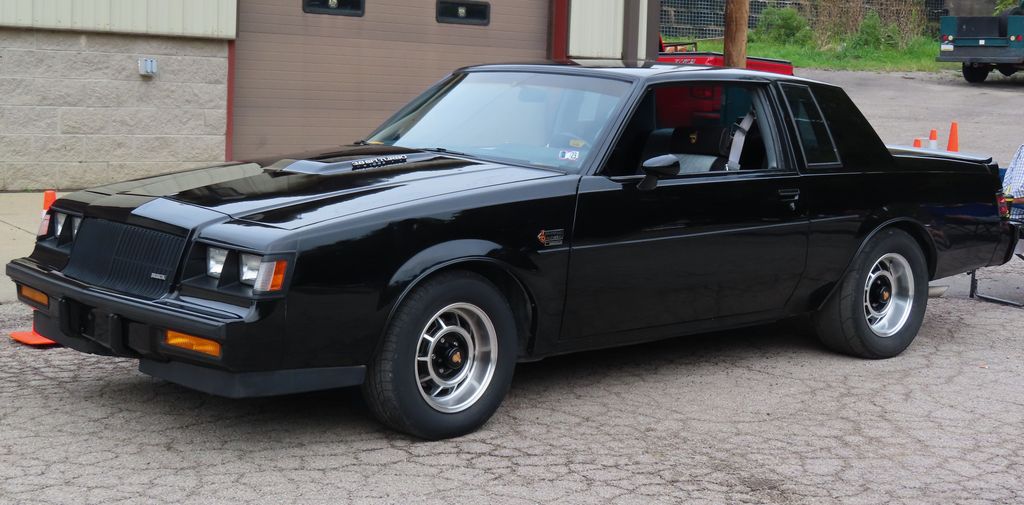
3. **1987 Buick Grand National GNX**This turbocharged beast wasn’t just a car; it was the stuff of street-racing legends and automotive folklore. Advertised as “Darth Vader’s car,” its stealthy black-on-black look perfectly matched its menacing performance, giving it an aura of quiet menace in a decade often derided for weak engines and bland designs. Buick, yes, Buick, shocked America by stuffing a savagely turbocharged V6 into this blacked-out, menacing G-body coupe.
The 1987 GNX took the factory Grand National and cranked everything up a notch, leading to an unforgettable final year of production for this powerhouse. This thing wasn’t just quick; it could outperform Corvettes and even some Ferraris of its day, launching from 0 to 60 in under 5 seconds. It had that perfect “bad guy in an ’80s action movie” energy — think Cobra without the terrible acting. And people noticed, because the GNX proved that Buick knew how to make a powerhouse sleeper.
Prices have skyrocketed for originals as gearheads recall the day these big-bad Buicks spanked Corvettes in quarter-mile runs. Produced in incredibly limited numbers (only 547 ever rolled off the line), the GNX was the kind of car you didn’t just own; you bragged about it, probably in hushed tones, after winning another stoplight grand prix. Today, it’s a blue-chip collector darling with price tags that make jaws drop harder than a poorly tuned carburetor. The key to its value? Originality. The closer to showroom-fresh, unmolested condition, the more serious collectors will drool. If you find one with the plastic still on the seats, sell a kidney.
Car Model Information: 2019 Honda Accord Sport 2.0T
Name: Buick Regal
Caption: 2020 Regal Sportback
Manufacturer: General Motors
ModelYears: Unbulleted list
Sp: us
Predecessor: Buick Skylark#Second generation (1968–1972),Buick Century
Successor: Buick LaCrosse
Categories: 1980s cars, 1990s cars, 2000s cars, 2010s cars, 2020s cars
Summary: The Buick Regal is a line of mid-size cars marketed by Buick since 1973. Serving as the premium mid-size/intermediate car of the Buick product range for nearly its entire production, the Regal initially served as the divisional counterpart of the Pontiac Grand Prix and Oldsmobile Cutlass Supreme; since the late 2000s, the model line has been derived from the Opel Insignia. The Regal also serves as the basis of the high-performance Grand National, Gran Sport (GS), and Buick GNX coupes.
Through its production, the Regal has been marketed under a wide variety of body styles, including two-door coupes and four-door sedans (currently in production), along with a 5-door liftback sedan and a 5-door station wagon; the latter (the 2018-2020 Regal TourX) was the first Buick station wagon marketed since the retirement of both the Century and Roadmaster Estates after 1996. The turbocharged LD5 3.8L V6 used in the second generation was used to showcase the motorsports presence of the brand; though offered with other vehicles (including Chevrolets and Pontiacs), the turbocharged engine is most commonly associated with the Regal. During the 1990s, the V6 regained forced induction, with a supercharger replacing the turbocharger.
In 1999, General Motors commenced sales of its vehicles in China, with the Buick Regal serving as its introductory model of the joint venture SAIC-GM. After 2004, Buick retired the model line in North America, as it replaced both the Regal and the Century with the Buick LaCrosse. Following the introduction of the second-generation Regal for China for 2008, the model line returned to North America for the 2011 model year, slotted slightly below the LaCrosse. Following the introduction of the sixth-generation Regal (sourced entirely from Opel) for 2018, GM sold Opel to PSA (now Stellantis), ending sales in North America after the 2020 model year. Currently, the Insignia B-derived Regal remains in production by SAIC-GM.
Get more information about: Buick Regal
Buying a high-performing used car >>>
Brand: Buick Model: Grand National GNX
Price: $22,566 Mileage: 52,019 mi.
Read more about: Death Traps on Wheels: 10 Iconic American Cars Too Dangerous for Today’s Roads
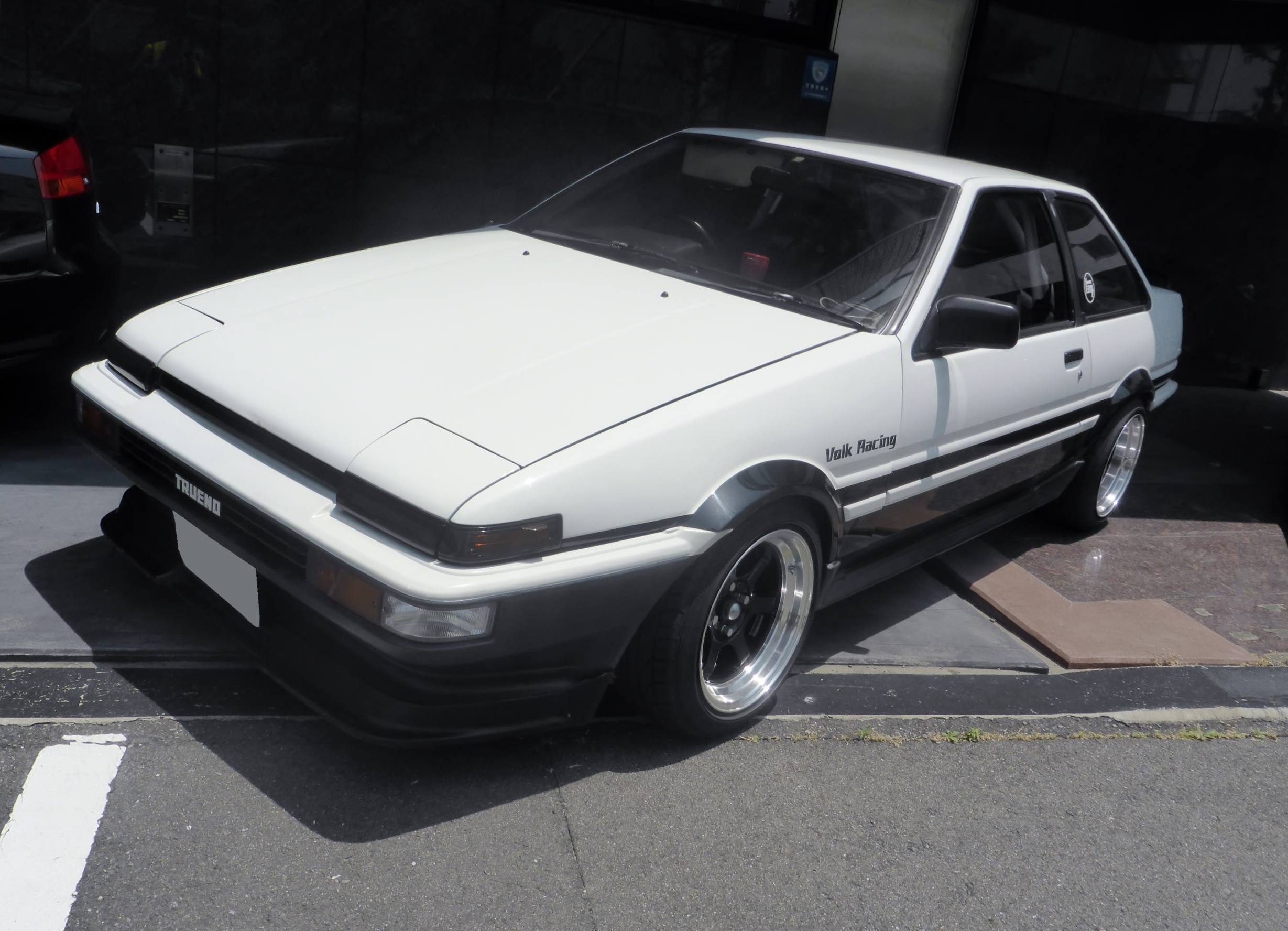
4. **1985 Toyota AE86**The AE86 wasn’t a lightning-fast supercar designed for top-speed runs, but its rear-wheel-drive layout and feathery weight turned it into an absolute corner-carving superstar. This unassuming Corolla-based coupe defied its humble badge, quickly gaining a reputation for its nimble handling and exceptional balance. It was a driver’s car, pure and simple, prioritizing engagement over raw, straight-line power.
Made famous in numerous drifting events and beloved by tuners across the globe, the AE86 became synonymous with grassroots racing and Japanese domestic market (JDM) culture. In the ’80s, Tokyo street racers and local track enthusiasts alike embraced its playful nature and tunable chassis, transforming it into a legend on twisty roads and makeshift circuits. Its enduring legacy is a testament to its fundamental engineering excellence and its incredible versatility.
Now, decades later, you’ll find collectors scouring the market for any AE86 they can get their hands on, eager to secure a piece of JDM history that profoundly defined an era of spirited, accessible racing. The demand for clean, unmodified examples has surged, turning this once-humble compact into a highly sought-after collectible. Its story is a powerful reminder that true automotive greatness isn’t always about horsepower; sometimes, it’s about purity of design and the thrill of the drive.
Read more about: Why We Still Adore Them: A Deep Dive into the Most Gloriously Awkward ’80s Cars That Were So Ugly, They Became Icons

5. **1985 Ferrari Testarossa**If there was ever an exotic that absolutely typified the big-hair, neon-lit vibe of the ’80s, it was, without a shadow of a doubt, the Ferrari Testarossa. With its dramatic, instantly recognizable side strakes that flowed seamlessly into the rear fenders, and a flat-12 engine that roared like a caged beast, the Testarossa quickly became the quintessential poster car for a whole generation. It was a symbol of aspirational wealth and flamboyant style, appearing in countless music videos and movies.
Between your pastel suits and flip-up sunglasses, you probably saw one on TV, gracing the screens of shows like ‘Miami Vice,’ or perhaps even caught a glimpse of its striking form at the local exotic dealership. Its broad, muscular stance and unmistakable presence commanded attention, embodying the very essence of ’80s excess and automotive artistry. The Testarossa wasn’t just a car; it was a cultural phenomenon, an embodiment of the era’s bold aesthetic.
Today, the Ferrari Testarossa remains a must-have trophy for serious collectors of classic supercars, its value steadily appreciating as a tangible link to a unique automotive era. Its iconic design and legendary performance ensure its place in the pantheon of motoring greats, standing as a vibrant, undeniable masterpiece of 1980s Italian automotive engineering and styling. To own a Testarossa is to own a piece of ’80s legend, a timeless icon that still turns heads wherever it goes.
Car Model Information: 1987 Ferrari Testarossa
Name: Ferrari Testarossa, 512 TR and F512 M
Manufacturer: Ferrari
Production: 1984–1996,9,939 produced
Assembly: Maranello
Predecessor: Ferrari Berlinetta Boxer
Class: Sports car,Grand tourer
BodyStyle: berlinetta
Layout: Rear mid-engine, rear-wheel-drive layout
Engine: Ferrari flat-12 engine,Flat-12 engine
Transmission: Manual transmission
Designer: Leonardo Fioravanti (engineer)
Categories: 1990s cars, All articles with dead external links, All articles with unsourced statements, Articles containing Latin-language text, Articles with dead external links from February 2018
Summary: The Ferrari Testarossa (Type F110) is a 12-cylinder mid-engine sports car manufactured by Ferrari, which went into production in 1984 as the successor to the Ferrari Berlinetta Boxer. The Pininfarina-designed car was originally produced from 1984 until 1991, with two model revisions following the end of Testarossa production called the 512 TR and F512 M, which were produced from 1992 until 1996. Including revised variations, almost 10,000 cars in total were produced, making it at the time one of the most mass-produced Ferrari models.
The Testarossa is a two-door coupé that premiered at the 1984 Paris Auto Show. All versions of the Testarossa were available with a rear-mounted, five-speed manual transmission. The rear mid-engine design (engine between the axles but behind the cabin) keeps the centre of gravity in the middle of the car, which increases stability and improves the car’s cornering ability, and thus results in a standing weight distribution of 40% front: 60% rear.
The original Testarossa was re-engineered for the 1992 model year and was introduced as the 512 TR (TR meaning TestaRossa), at the Los Angeles Auto Show, effectively as a completely new car, and an improved weight distribution of 41% front, 59% rear. Another new variant called the F512 M was introduced at the 1994 Paris Auto Show. The car dropped the TR initials and added the M which in Italian stood for modificata, or translated to modified, and was the final version of the Testarossa, which continued its predecessor’s weight distribution improvement of 42% front, 58% rear. The F512 M was Ferrari’s last vehicle that featured the flat-12 engine.
The Testarossa is a recognized cultural icon of the 1980s, and was popularized by media including the 1984 television series Miami Vice (from the 1986 season onward) and Sega’s 1986 video game Out Run.
Get more information about: Ferrari Testarossa
Buying a high-performing used car >>>
Brand: Ferrari Model: Testarossa
Price: $139,800 Mileage: 0 mi.
Read more about: Beyond the Red Carpet: Dissecting the Iconic Cars Celebrities Drive and the PR Machine Behind Their Public Persona

6. **1989 Nissan Skyline GT-R (R32)**The R32 Skyline GT-R might have just squeezed into the tail end of the ’80s, but it left an absolutely enormous and indelible mark on performance car culture that continues to resonate today. Nicknamed “Godzilla” for its monstrous capabilities, it wasn’t merely a fast car; it devoured racetracks around the globe with a ferocious appetite for victory, dominating touring car series and cementing its legendary status almost overnight.
Its secret weapon was a combination of advanced all-wheel-drive system, which provided unparalleled grip and stability, and a formidable turbocharged inline-six engine that delivered blistering acceleration and incredible power. Back home in Japan, and soon whispered about worldwide, folks were in awe of its high-tech wizardry that seemed genuinely futuristic, pushing the boundaries of what was thought possible for a production vehicle. It redefined performance standards for an entire industry.
Today, enthusiasts worldwide are importing these LEGENDARY machines, often going through considerable effort, completing the dream they had when the GT-R was just a fabled unicorn of Japanese motoring, kept from many markets. Its legacy as a technological tour de force and a dominant force in motorsport ensures its place as a blue-chip collector car, representing the pinnacle of ’80s Japanese performance engineering. Owning an R32 GT-R is about celebrating a true automotive legend.
Car Model Information: 2019 Honda Accord Sport 2.0T
Name: Nissan Skyline GT-R
Caption: 2002 Nissan Skyline GT-R V·spec II (BNR34)
Manufacturer: Nissan
Production: unbulleted list
Assembly: unbulleted list
Class: Sports car
Related: unbulleted list
Transmission: unbulleted list
Predecessor: Nissan Skyline#BLRA-3 Skyline Sport
Successor: Nissan GT-R
Categories: 1970s cars, 1980s cars, 1990s cars, 2000s cars, 24 Hours of Le Mans race cars
Summary: The Nissan Skyline GT-R is a Japanese sports car based on the Nissan Skyline range. The first cars named “Skyline GT-R” were produced between 1969 and 1972 under the model code KPGC10, and were successful in Japanese touring car racing events. This model was followed by a brief production run of second-generation cars, under model code KPGC110, in 1973. After a 16-year hiatus, the GT-R name was revived in 1989 as the BNR32 (“R32”) Skyline GT-R. Group A specification versions of the R32 GT-R were used to win the Japanese Touring Car Championship for four years in a row. The R32 GT-R also had success in the Australian Touring Car Championship, with Jim Richards using it to win the championship in 1991 and Mark Skaife doing the same in 1992, until a regulation change excluded the GT-R in 1993. The technology and performance of the R32 GT-R prompted the Australian motoring publication Wheels to nickname the GT-R “Godzilla” in its July 1989 edition. Wheels then carried the name through all the generations of Skyline GT-Rs, most notably the R34 GT-R, which they nicknamed “Godzilla Returns”, and described as “The best handling car we have ever driven”. In tests conducted by automotive publications, R34 GT-R have covered a quarter of a mile (402 metres) in 12.2 seconds from a standing start time and accelerated from 0–100 km/h (0–62 mph) in 4.4 seconds. The Skyline GT-R became the flagship of Nissan performance, showing many advanced technologies including the ATTESA E-TS all-wheel drive system and the Super-HICAS four-wheel steering. Today, the car is popular for import drag racing, circuit track, time attack and events hosted by tuning magazines. Production of the Skyline GT-R ended in August 2002. The car was replaced by the GT-R (R35), an all-new vehicle based on an enhanced version of the Skyline V36 platform. Although visibly different, the two vehicles share similar design features and are manufactured in the same factory. The Skyline GT-R was never manufactured outside Japan, and the sole export markets were Hong Kong, Singapore, Australia and New Zealand, in 1991, and the UK (in 1997, due to the Single Vehicle Approval scheme). They are also popular across the world as used Japanese imports. Despite this, the Skyline GT-R has become an iconic sports car as a grey import vehicle in the Western world (mainly the United Kingdom, Australia, New Zealand, South Africa, Ireland, Canada, and the United States). It has become notable through pop culture such as The Fast and the Furious, Initial D, Shakotan Boogie, Tokyo Xtreme Racer, Wangan Midnight, Need for Speed, Forza, Driving Emotion Type-S, Test Drive, and Gran Turismo. In 2019, Nismo announced that it would resume production of spare parts for all generations of the Skyline GT-R, including body panels and engines.
Get more information about: Nissan Skyline GT-R
Buying a high-performing used car >>>
Brand: Nissan Model: Skyline GT-R
Price: $22,566 Mileage: 52,019 mi.
Read more about: Unveiling Japan’s Automotive Crown Jewels: 15 Ultra-Rare Masterpieces for the True Enthusiast

7. **1982 DeLorean DMC-12**Few cars capture the pure essence of ’80s nostalgia and pop culture fascination quite like the DeLorean DMC-12. With its iconic gull-wing doors that effortlessly sliced upward, its distinctive brushed stainless-steel body that shimmered under the sun, and, of course, a starring role in time-traveling flicks, the DeLorean became an instant legend. Despite a rocky production run and financial woes that plagued its creator, John DeLorean, the car’s mystique only grew.
It’s become a bona fide cult classic that conjures up dreams of flux capacitors and outrunning space-time barriers, forever linked with the adventures of Marty McFly. Though not a rocket off the line in terms of raw speed, the DMC-12’s unique look still stops traffic and sparks conversations wherever it appears. Its unconventional design and compelling backstory make it far more than just a car; it’s a piece of cultural history, a tangible relic of an audacious vision.
An original DeLorean is an absolute showstopper at any car event, instantly signaling cool retro vibes and an undeniable sense of wonder. What’s truly remarkable is that DeLorean Motor Company (the modern version) still exists — and they still offer parts, upgrades, and service for this car. That kind of factory support for a low-volume, defunct marque from the early ’80s is practically unheard of. It ensures the DMC-12 remains a surprisingly smart buy — especially if you’re collecting with your heart as much as your head, prioritizing charisma and cultural relevance over brute force.”
, “_words_section1”: “1940
Now, buckle up because our journey through ’80s automotive greatness is far from over! We’re diving even deeper into that fantastic decade to uncover more engineering marvels, surprising sleepers, and distinctive luxury cruisers that are absolutely tearing up the collector market. These aren’t just cars; they’re rolling pieces of history, each with a story to tell and a place in the hearts of enthusiasts.
Car Model Information: 1982 Delorean DMC-12
Name: DMC DeLorean
Alt: 1983 DeLorean
Caption: 1983 DeLorean
Manufacturer: DeLorean Motor Company
Production: January 21, 1981 – December 1982
ModelYears: 1981–1983
Assembly: Dunmurry
Designer: Giorgetto Giugiaro
Class: Sports car
BodyStyle: coupé
Layout: Rear-engine, rear-wheel-drive layout
Doors: Gull-wing doors
Engine: 2.85 L
Abbr: on
Powerout: 130 hp
Transmission: 5-speed manual ,3-speed automatic
Wheelbase: 2413 mm
Length: 4267 mm
Width: 1988 mm
Height: 1140 mm
Weight: 1233 kg
Sp: us
Categories: 1980s cars, All Wikipedia articles written in American English, Articles with short description, Automobiles with backbone chassis, Automobiles with gull-wing doors
Summary: The DMC DeLorean is a rear-engine, two-seat sports car manufactured and marketed by John DeLorean’s DeLorean Motor Company (DMC) for the American market from 1981 until 1983—ultimately the only car brought to market by the fledgling company. The DeLorean is sometimes referred to by its internal DMC pre-production designation, DMC-12, although this was not used in sales or marketing materials for the production model.
Designed by Giorgetto Giugiaro, the DeLorean is noted for its gull-wing doors and brushed stainless-steel outer body panels, as well as its lack of power and performance. Though its production was short-lived, the DeLorean became widely known after it was featured as the time machine in the Back to the Future films.
With the first production car completed on January 21, 1981, the design incorporated numerous minor revisions to the hood, wheels and interior before production ended in late December 1982, shortly after DMC filed for bankruptcy and after total production reached an estimated 9,000 units.
Despite the car having a reputation for poor build quality and an unsatisfactory driving experience, the DeLorean continues to have a strong following, driven in part by the popularity of Back to the Future. 6,500 DeLoreans were estimated to still be on the road as of 2015.
Get more information about: DMC DeLorean
Buying a high-performing used car >>>
Brand: DeLorean Model: DMC-12
Price: $129,950 Mileage: 3,145 mi.
Read more about: The Resurgent Roar: Unearthing Eight Forgotten Luxury Car Brands Poised for a Modern Comeback

8. **1986 Porsche 944 Turbo**Ah, the 944 Turbo! When Porsche unveiled this beauty, it struck a magnificent balance of performance, incredible handling, and a pricing structure that, for a Porsche, was surprisingly accessible. This ingenious move brilliantly broadened its appeal, inviting a fresh wave of buyers into the prestigious Porsche family. It truly was a gateway to German engineering excellence, without requiring you to sell a second kidney!
This car was an absolute marvel in carving corners, often outperforming many of its far pricier sports car rivals, thanks to its near-perfect weight distribution and a feisty turbocharged four-cylinder engine. Enthusiasts of the era couldn’t stop raving about its sporty, driver-focused interior and how it delivered a genuine taste of Porsche prestige. It was a proper, no-compromise driving machine that thrilled from the moment you turned the key.
Today, astute collectors are practically tripping over themselves to snap these up, recognizing the 944 Turbo as a truly underrated icon of German engineering. It’s not just a beautiful classic; it’s a solid, understated platform for weekend track fun, proving that true performance and sophisticated design never go out of style. Owning one is like holding a secret handshake with a golden era of sports car development.
Read more about: Unpacking the Wallet Drain: The 12 Most Expensive SUVs to Maintain in Today’s Market for Savvy Long-Term Planners

9. **1986 BMW E30 M3**If you wanted to talk about a car designed with racing pulsating through its very veins, the original E30 M3 was exactly it. This wasn’t just a road car; it was a homologation special, blessing its street-legal counterpart with those iconic flared fenders and a legendary balance that made it a terror on the track and a dream on the road. It embodied raw, unadulterated motorsport DNA.
Car enthusiasts in the glorious ’80s saw the E30 M3 as nothing short of a revelation. It was nimble, with a rev-happy engine that begged to be pushed, and it was absolutely brimming with the kind of motorsport pedigree that made rival manufacturers green with envy. From dedicated weekend track warriors to refined collectors looking for driving purity, practically everyone wanted a piece of this magnificent BMW.
Its distinct boxy lines and subtle spoilers are a fantastic callback to an era where driver engagement wasn’t just a buzzword; it was the absolute, undisputed king. Every twisty road became a thrilling test of skill, and the M3 delivered every single time. Today, its value continues to climb, a testament to its timeless appeal and its unwavering status as a driver’s car par excellence.
Car Model Information: 2019 Honda Accord Sport 2.0T
Name: BMW M3
Caption: 2021 BMW M3 Competition (G80)
Manufacturer: BMW M
Production: unbulleted list
Class: Compact executive car
Layout: unbulleted list
Related: unbulleted list
Categories: 1990s cars, 2000s cars, 2010s cars, 2020s cars, All Wikipedia articles written in British English
Summary: The BMW M3 is a high-performance version of the BMW 3 Series, developed by BMW’s in-house motorsport division, BMW M GmbH. M3 models have been produced for every generation of 3 Series since the E30 M3 was introduced in 1986.
The initial model was available in a coupé body style, with a convertible body style made available soon after. M3 saloons were offered initially during the E36 (1994–1999) and E90 (2008–2012) generations. Since 2014, the coupé and convertible models have been rebranded as the 4 Series range, making the high-performance variant the M4. Variants of the 3 Series since then have seen the M3 produced as a saloon, until 2020, when the M3 was produced as an estate (Touring) for the first time, alongside the saloon variant.
Get more information about: BMW M3
Buying a high-performing used car >>>
Brand: BMW Model: E30 M3
Price: $22,566 Mileage: 52,019 mi.
Read more about: Behind the Grease and Grime: 12 Cars That Make Mechanics Secretly Cheer (Or Curse) When You Roll In
10. **1989 Mazda RX-7 Turbo II**Rotor heads, rejoice! The second-generation RX-7, known internally as the FC, was a triumph, refining Mazda’s unique Wankel engine into a beautifully balanced, high-revving performer. But it was the Turbo II variant that truly brought the fireworks, adding an extra punch that allowed this lightweight sports car to confidently hold its own against some much stiffer competition. It was a symphony of engineering, delivered with a thrilling crescendo.
Folks who truly appreciate the mechanical ballet of a rotary engine find these ’80s coupes absolutely irresistible. The unique sound, the smooth power delivery, and the distinct driving experience set it apart from anything else on the road. With its cool pop-up headlights and a beautifully curvy silhouette, the RX-7 Turbo II still commands respect and elicits plenty of nostalgic smiles whenever it gracefully appears at local car meets.
This isn’t just a car; it’s a passion statement. It’s an ode to innovative engineering and a testament to Mazda’s audacious spirit in a world of piston engines. Collecting an RX-7 Turbo II is about more than just owning a fast car; it’s about owning a piece of automotive history that dared to be different, and spectacularly succeeded.
Car Model Information: 1993 Mazda RX-7 Touring 13B Twin Turbo
Name: Mazda RX-7
Caption: 1994 Mazda RX-7 R2 (FD3S)
Manufacturer: Mazda
Aka: Mazda Savanna RX-7 (Japan, 1978–1991),Mazda ɛ̃fini RX-7 (Japan, 1991–1997)
Class: Sports car
Production: 1978–2002,811,634 produced
Assembly: Hiroshima
Platform: Mazda F platform
Layout: Front-engine, rear-wheel-drive layout#Front mid-engine, rear-wheel-drive layout
Predecessor: Mazda RX-3
Successor: Mazda RX-8
Categories: 1980s cars, 1990s cars, 2000s cars, 24 Hours of Le Mans race cars, All articles needing additional references
Summary: The Mazda RX-7 is a front mid engine, rear-wheel-drive, rotary engine-powered sports car, manufactured and marketed by Mazda from 1978 to 2002 across three generations, all of which incorporated the use of a compact, lightweight Wankel rotary engine.
The first-generation RX-7, codenamed SA (early) and FB (late), is a two-seater two-door hatchback coupé. It featured a 12A carbureted rotary engine as well as the option for a 13B rotary engine with electronic fuel injection in later years. The second-generation RX-7, carrying the internal model code FC, was offered as a two-seater coupé with a 2+2 option available in some markets, as well as in a convertible body style. This was powered by the 13B rotary engine, offered in naturally aspirated or turbocharged forms. The third-generation RX-7, model code FD, was offered as a two-seater coupé with a 2+2 version offered as an option for the Japanese market. It featured a sequentially turbocharged 13B REW engine.
More than 800,000 RX-7s were manufactured over its lifetime.
Get more information about: Mazda RX-7
Buying a high-performing used car >>>
Brand: Mazda Model: RX-7
Price: $55,995 Mileage: 75,359 mi.
Read more about: Unearthing Hidden Performance: 14 Underrated Sports Cars That Defy Expectations for Today’s Performance Seekers
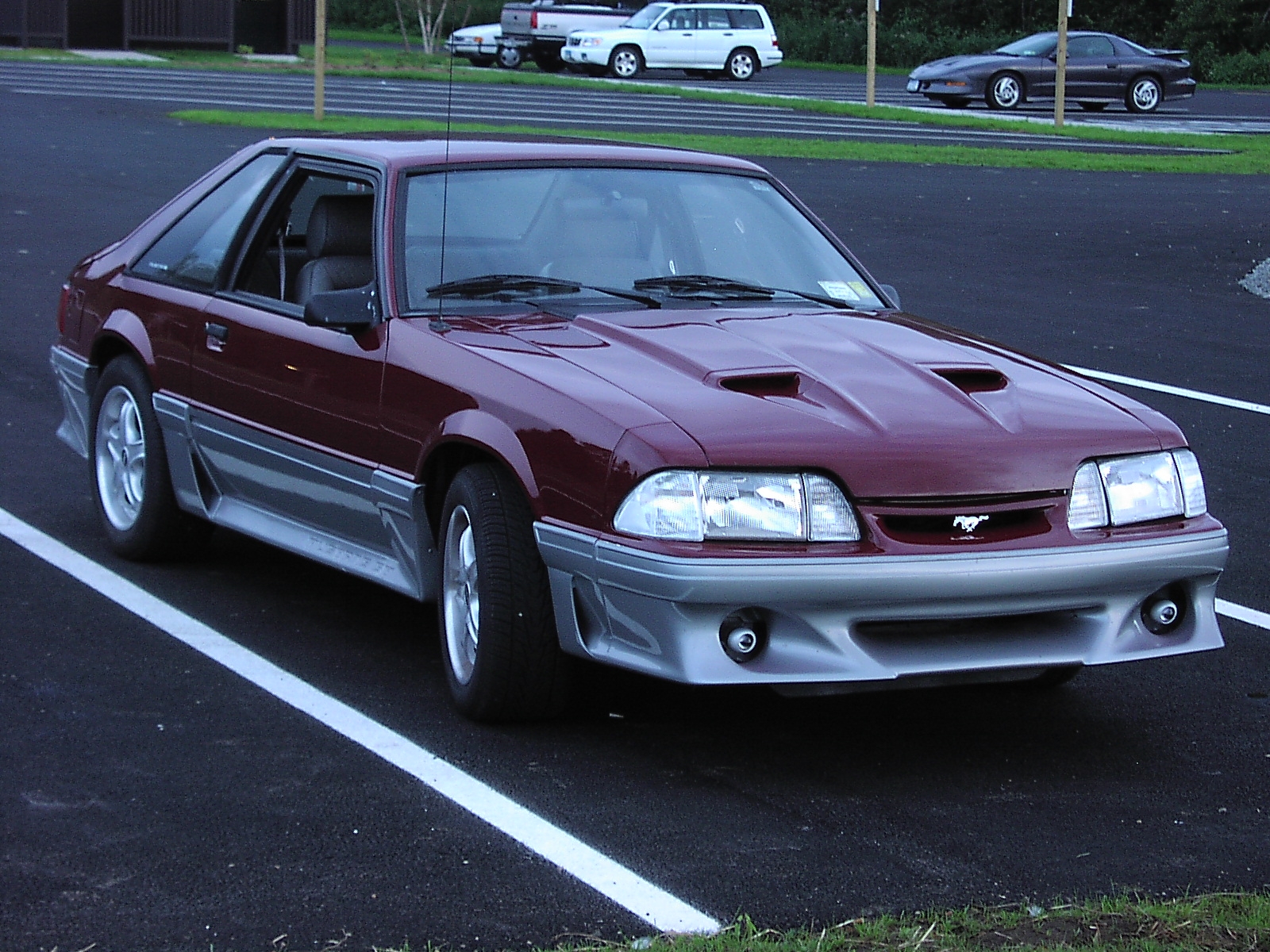
11. **1987 Ford Mustang GT (Fox Body)**Ford’s Fox Body Mustangs weren’t just cars; they were a movement, prowling the streets with their often big-lunged V8s and a low, undeniably aggressive stance. By 1987, a fantastic front-end refresh gave it a more modern, aerodynamic look, yet it remained unmistakably and gloriously ’80s. This was the car of choice for a generation, and its impact was immense.
Back in the day, it seemed like everyone knew someone who spent their weekends tinkering with a 5.0-liter engine, constantly trying to extract even more ponies from it. The Fox Body was a canvas for customization, a beloved platform for street racers and enthusiasts alike. It perfectly embodied the accessible performance ethos of American muscle, making speed attainable for the masses.
Today, the Fox Body has gracefully transitioned from street hero to a cherished darling of collectors. It’s a beloved piece of American muscle that’s not only easy to upgrade but also guaranteed to turn heads and ignite conversations wherever it goes. Its raw simplicity, robust aftermarket support, and undeniable cool factor make it a smart, heart-thumping investment.
Car Model Information: 2019 Honda Accord Sport 2.0T
Name: Ford Mustang
Caption: 2018 Ford Mustang GT 5.0
Aka: Ford T5 (Germany)
Manufacturer: Ford Motor Company
Production: March 1964 – present
ModelYears: 1965–present
Class: Unbulleted list
BodyStyle: Unbulleted list
Layout: Front-engine, rear-wheel-drive layout
Categories: 1970s cars, 1980s cars, 1990s cars, 2+2 coupés, 2000s cars
Summary: The Ford Mustang is an American automobile manufactured and marketed by Ford since 1964, as Ford’s longest nameplate in continuous production. Currently in its seventh generation, it is the fifth-best selling Ford car nameplate. The namesake of the “pony car” automobile segment, the Mustang was developed as a highly styled line of sporty coupes and convertibles derived from existing model lines, initially distinguished by its pronounced “long hood, short deck” proportions.
Originally predicted to sell 100,000 vehicles yearly, the 1965 Mustang became the most successful vehicle launch since the 1927 Model A. Introduced on April 17, 1964 (16 days after the Plymouth Barracuda), over 400,000 units were sold in its first year; the one-millionth Mustang was sold within two years of its launch. In August 2018, Ford produced the 10-millionth Mustang; matching the first 1965 Mustang, the vehicle was a 2019 Wimbledon White convertible with a V8 engine.
The success of the Mustang launch led to multiple competitors from other American manufacturers, including the Chevrolet Camaro and Pontiac Firebird (1967), AMC Javelin (1968), and Dodge Challenger (1970). It also competed with the Plymouth Barracuda, which was launched around the same time. The Mustang also had an effect on designs of coupes worldwide, leading to the marketing of the Toyota Celica and Ford Capri in the United States (the latter, by Lincoln-Mercury). The Mercury Cougar was launched in 1967 as a unique-bodied higher-trim alternative to the Mustang; during the 1970s, it included more features and was marketed as a personal luxury car.
From 1965 until 2004, the Mustang shared chassis commonality with other Ford model lines, staying rear-wheel-drive throughout its production. From 1965 to 1973, the Mustang was derived from the 1960 Ford Falcon compact. From 1974 until 1978, the Mustang (denoted Mustang II) was a longer-wheelbase version of the Ford Pinto. From 1979 until 2004, the Mustang shared its Fox platform chassis with 14 other Ford vehicles (becoming the final one to use the Fox architecture). Since 2005, Ford has produced two generations of the Mustang, each using a distinct platform unique to the model line.
Through its production, multiple nameplates have been associated with the Ford Mustang series, including GT, Mach 1, Boss 302/429, Cobra (separate from Shelby Cobra), and Bullitt, along with “5.0” fender badging (denoting 4.9 L OHV or 5.0 L DOHC V8 engines).
Get more information about: Ford Mustang
Buying a high-performing used car >>>
Brand: Ford Model: Mustang GT
Price: $22,566 Mileage: 52,019 mi.

12. **1989 Saab 900 Turbo**The Saab 900 Turbo was never one to follow the crowd; it was a wonderfully quirky contender hailing from Sweden, marching to the beat of its own drum. With its distinctive hatchback shape and an aircraft-inspired cockpit that felt like you were piloting a jet, it captivated free spirits and independent thinkers everywhere. This car was different, and that was its greatest strength.
Turbocharging gave it a surprisingly zippy performance, beautifully blending Scandinavian practicality with a delightful dash of spice and exhilaration. In the ’80s, it transcended mere transportation, becoming the discerning choice for professors, artists, and anyone wanting something truly different from the mainstream. It was a statement of individuality, a car with genuine character.
These days, savvy collectors are eagerly snapping up well-preserved 900 Turbos, drawn to their utterly unique design, robust engineering, and that undeniable, charmingly offbeat appeal. It’s a car that sparks joy, a testament to thoughtful design and a reminder that sometimes, the most interesting paths are the ones less traveled.
Car Model Information: 2019 Honda Accord Sport 2.0T
Name: Saab 900
Caption: Saab 900 SE Turbo 3-door
Manufacturer: Saab-Scania,Saab Automobile
Production: 1978–1998
Assembly: Sweden:,Trollhättan,Arlöv,Malmö,Uusikaupunki
Class: Compact executive car
Layout: Front-engine, front-wheel-drive layout
Predecessor: Saab 99
Successor: Saab 9-3
Categories: 1980s cars, 1990s cars, All Wikipedia articles needing clarification, All articles needing additional references, All articles that may contain original research
Summary: The Saab 900 is a mid-sized automobile produced by Swedish manufacturer Saab from 1978 until 1998 in two generations: the first from 1978 to 1994, and the second from 1994 to 1998.
The first-generation car was based on the Saab 99 chassis, though with a longer front end to meet U.S. frontal crash regulations and to make room for the turbo-charged engines, air conditioning and other equipment that was not available in the early days of the 99 model. The 900 was produced in 2- and 4-door sedan, and 3- and 5-door hatchback configurations and, from 1986, as a cabriolet (convertible) model. There were single- and twin-Zenith carburettor; fuel injected, and turbocharged engines, including Full Pressure Turbo (FPT) and, in European models during the early 1990s, Low Pressure Turbos (LPT).
Get more information about: Saab 900
Buying a high-performing used car >>>
Brand: Saab Model: 900 Turbo
Price: $22,566 Mileage: 52,019 mi.
Read more about: The Resurgent Roar: Unearthing Eight Forgotten Luxury Car Brands Poised for a Modern Comeback
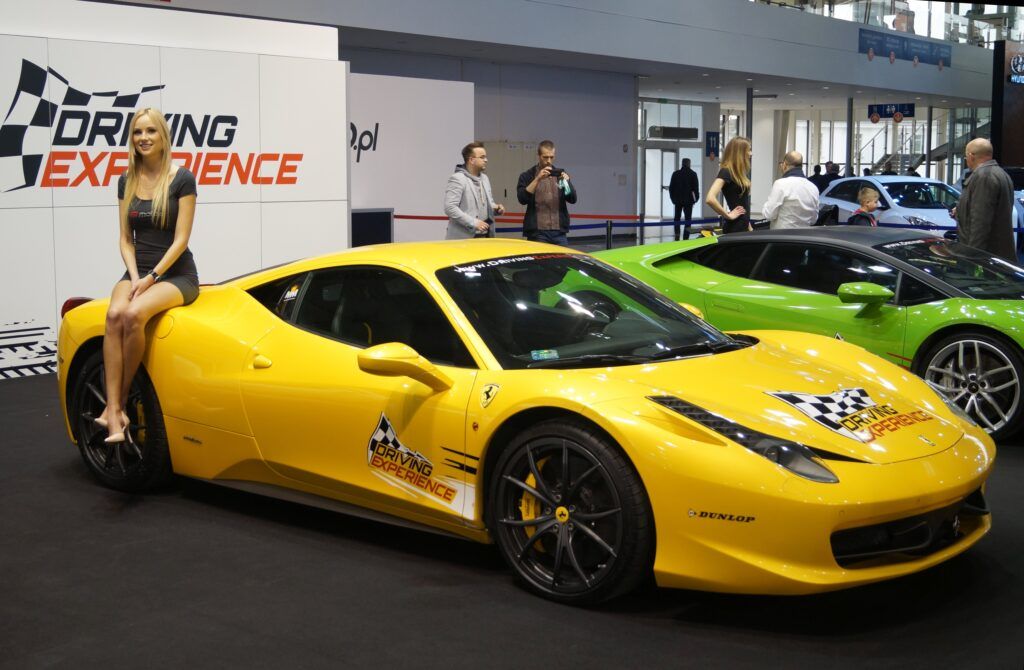
13. **Mazda RX-7 FB**If you’re fortunate enough to own an ’80s Mazda RX-7 FB, you possess a true gem with a unique rotary engine that instantly distinguishes it from the sea of conventional cars. This was Mazda’s groundbreaking first-generation RX-7, a car celebrated for its lightweight design and incredibly sharp handling. It carved a niche for itself by offering a driving experience that was both engaging and distinctly different.
While your RX-7 FB might not boast the flashy aesthetics or raw power of later models, it has cultivated an exceptionally loyal following. It represents a fantastic entry point into the exciting world of classic Japanese sports cars, offering a purity of design that is increasingly rare today. It’s a testament to Mazda’s engineering audacity and its commitment to innovation.
Collectors and enthusiasts deeply appreciate its fantastic blend of simplicity, balanced performance, and the sheer thrill of that high-revving rotary powerplant. This car reminds us that sometimes, the most profound automotive joys come from cars that dare to be different, leaving a legacy that’s cherished decades later.
Car Model Information: 2019 Honda Accord Sport 2.0T
Name: Mazda RX-7
Caption: 1994 Mazda RX-7 R2 (FD3S)
Manufacturer: Mazda
Aka: Mazda Savanna RX-7 (Japan, 1978–1991),Mazda ɛ̃fini RX-7 (Japan, 1991–1997)
Class: Sports car
Production: 1978–2002,811,634 produced
Assembly: Hiroshima
Platform: Mazda F platform
Layout: Front-engine, rear-wheel-drive layout#Front mid-engine, rear-wheel-drive layout
Predecessor: Mazda RX-3
Successor: Mazda RX-8
Categories: 1980s cars, 1990s cars, 2000s cars, 24 Hours of Le Mans race cars, All articles needing additional references
Summary: The Mazda RX-7 is a front mid engine, rear-wheel-drive, rotary engine-powered sports car, manufactured and marketed by Mazda from 1978 to 2002 across three generations, all of which incorporated the use of a compact, lightweight Wankel rotary engine.
The first-generation RX-7, codenamed SA (early) and FB (late), is a two-seater two-door hatchback coupé. It featured a 12A carbureted rotary engine as well as the option for a 13B rotary engine with electronic fuel injection in later years. The second-generation RX-7, carrying the internal model code FC, was offered as a two-seater coupé with a 2+2 option available in some markets, as well as in a convertible body style. This was powered by the 13B rotary engine, offered in naturally aspirated or turbocharged forms. The third-generation RX-7, model code FD, was offered as a two-seater coupé with a 2+2 version offered as an option for the Japanese market. It featured a sequentially turbocharged 13B REW engine.
More than 800,000 RX-7s were manufactured over its lifetime.
Get more information about: Mazda RX-7
Buying a high-performing used car >>>
Brand: Mazda Model: RX-7 FB
Price: $22,566 Mileage: 52,019 mi.
Read more about: Unearthing Hidden Performance: 14 Underrated Sports Cars That Defy Expectations for Today’s Performance Seekers
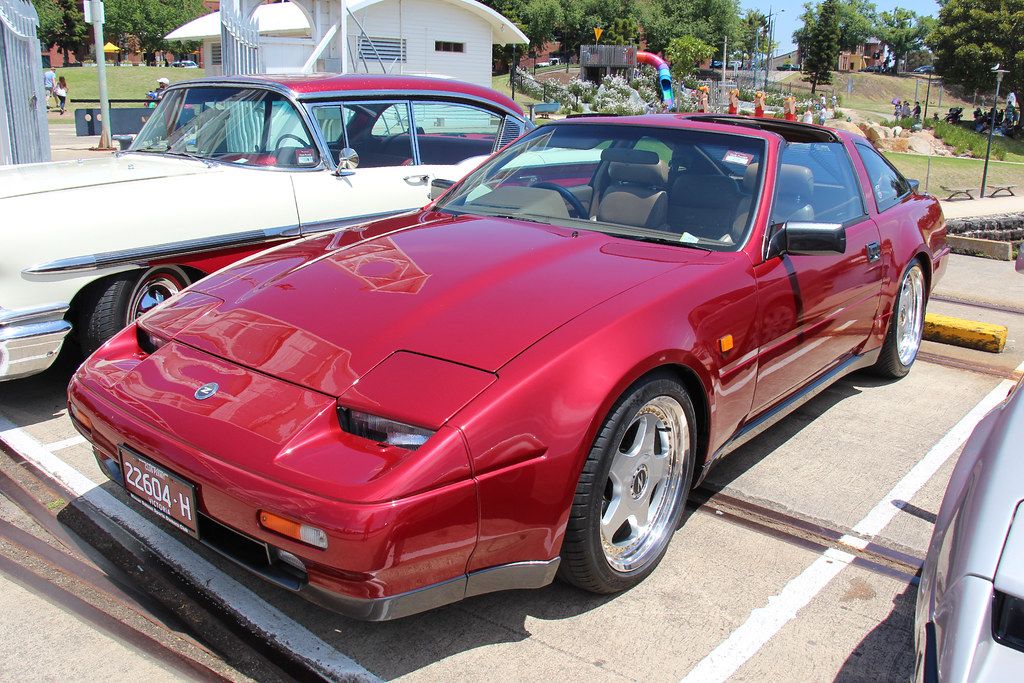
14. **Nissan 300ZX Z31**The Nissan 300ZX Z31 is one of those fantastic ’80s sports cars that, for too long, has flown under the radar, yet it has an incredible amount to offer. It occupies a fascinating sweet spot, nestled between the beloved classic Datsun Zs and the more famous, later Z32 model. Because of this, it often doesn’t receive the widespread attention it so richly deserves, making it a hidden treasure for those in the know.
Step inside, and you’ll discover a captivating blend of retro ’80s styling cues—think digital dashboards and angular lines—paired with the thrilling punch of turbocharged performance. This unique combination makes it an incredibly distinctive ride that stands out in any collection. It offers a genuine slice of ’80s sports car glamour without the exorbitant price tag, proving that sophistication doesn’t always come with a premium.
Currently, these Z31s are still reasonably priced, making them an incredibly fun and accessible collectible if you’re searching for something truly different from the usual classic car suspects. Its dynamic driving experience and unique aesthetic make it a solid choice for anyone looking to invest in a piece of automotive history that offers both character and thrill. It’s a genuine sleeper hit that’s only just beginning to receive its well-deserved recognition.
Car Model Information: 1990 Nissan 300ZX GS
Name: Nissan 300ZX
Class: Grand Tourer
Manufacturer: Nissan
Production: 1983–2000
Assembly: ubl
Aka: Nissan Fairlady Z
Layout: Front-engine, rear-wheel-drive layout
Predecessor: Nissan Fairlady Z (S130)
Successor: Nissan 350Z
Categories: 1990s cars, 2+2 coupés, All articles needing additional references, All articles with unsourced statements, Articles needing additional references from May 2021
Summary: The Nissan 300ZX is a sports car that was produced across two different generations. As with all other versions of the Z, the 300ZX was sold within the Japanese domestic market under the name Fairlady Z.
It was sold in Japan from 1983 to 2000 and in the United States from 1984 to 1996, the 300ZX name followed the numerical convention initiated with the original Z car, the Nissan Fairlady Z (S30), which was marketed in the U.S. as the 240Z. The addition of the “X” to the car’s name was a carryover from its predecessor, the 280ZX, to signify the presence of more luxury and comfort oriented features. The first generation 300ZX known as the Z31 model was produced from 1983 through 1989 and was a sales success becoming the highest volume Z-car for Nissan.
To become even more competitive in the sports car market, the second generation 300ZX was driven up-market. It was redesigned to be faster and to feature more advanced technology, but came with a higher price than its predecessor, with consecutive price increases each model year of availability. As such, sales dwindled each year, a trend in the higher end sports car market at the time, and Nissan placed a hiatus on selling new Nissan Z-Cars to the US after the 1996 model year, though the car would continue to be sold in the Japan domestic market until 2001 in low production numbers.
Car and Driver placed the Z32 on its Ten Best list for seven consecutive years, each model year of its availability in the United States. Motor Trend awarded it as the 1990 Import Car of the Year. The Nissan 350Z, officially the Z33 generation Z-Car, succeeded the 300ZX in 2003.
Get more information about: Nissan 300ZX
Buying a high-performing used car >>>
Brand: Nissan Model: 300ZX
Price: $24,664 Mileage: 21,680 mi.
Read more about: Unearthing Hidden Performance: 14 Underrated Sports Cars That Defy Expectations for Today’s Performance Seekers
These magnificent machines collectively paint a vivid picture of a truly transformative decade for the automotive world. The 1980s were a period when innovation, distinctive styling, and unique engineering converged to create cars that, at the time, were simply everyday vehicles, but have now ascended to the hallowed halls of collector favorites. From turbocharged sleepers that left pricier sports cars in their dust to elegant luxury cruisers that defined an aspirational lifestyle, these rides continue to captivate. So, whether you’re chasing the exhilarating echoes of your youth or scouting for the next smart investment, these ’80s automotive icons offer a unique blend of nostalgia, performance, and undeniable cool. They aren’t just cars; they’re rolling time capsules, ready to transport you back to a truly unforgettable era, one perfectly preserved mile at a time.

